with photos by Dave Green, Peter Eeles and Chris Manley.
This report details the butterflies and moths observed on a trip made to Italy from 14th to 20th June 2008. The members of the party were Chris Manley, Dave Green, Paul and Susie Butter, Peter Davey, Peter Eeles and Tim Norriss.
Our base was in Sarnano in north-east Italy.

Sarnano was to the north of most of the areas visited, as indicated in the figure below.

Each site we visited is identified with a letter (A through R) in this report, the details of which are:

After flying to Ancona, we drove to Casa Luisa, the villa in Sarnano which acted as our base for the trip. The villa was at the top of a hill and the grounds were well-suited to butterflies - especially the whites which were especially attracted to the extensive rows of lavender.

Having unpacked the luggage from the hire van, we surveyed the garden and managed to notch up 8 species - Large Skipper (Ochlodes sylvanus), Small Skipper (Thymelicus sylvestris), Eastern Bath White (Pieris edusa), Eastern Dappled White (Euchloe ausonia), Small White (Pieris rapae), Marbled White (Melanargia galathea), Meadow Brown (Maniola jurtina) and Wall (Lasiommata megera). The Eastern Dapped White looked like an over-sized Orange-tip!
.jpg)
.jpg)
The villa was situated on the edge of deciduous mainly oak woodland and woodland-edge elm, and overlooked herb-rich hay meadow sloping down to the valley with occasional scrub species that included maple and blackthorn, so the expectation for seeing a varied selection of moth species was high. An array of five moth lights were set up around the house to maximise the catch and a total of 67 species were logged despite cool and damp conditions. As well as light traps, the lavender beds proved productive for moth species seeking nectar. A full list of species can be found in Appendix B. Rarities from a UK perspective included: Chrysocrambus craterella, Sitochroa verticalis, Essex Emerald, Lace Border, Least Carpet, Scarce Blackneck, Pale-shouldered Cloud, Heart, Small Ranunculus, Barrett's Marbled Coronet, Black V, Small Black Arches and Hoary Footman.


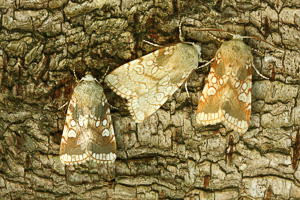



Site A - Casa Luisa, Sarnano

In this report, first sightings are shaded green in each table, the letters O, L and P refer to Ovum, Larva and Pupa, respectively. "sp." refers to a "species" of butterfly where the actual species could not be determined - such as a "fly by" of an Orange-tip species.
The day started with a survey of the garden which turned up some new butterfly species to add to the previous day's list - Essex Skipper (Thymelicus lineola), Swallowtail (Papilio machaon), Large White (Pieris brassicae), Painted Lady (Vanessa cardui), Queen of Spain Fritillary (Issoria lathonia), Red Admiral (Vanessa atalanta), Small Tortoiseshell (Aglais urticae) and Southern White Admiral (Limenitis reducta).
Our first full day of the trip had us visiting the Monti Sibillini - a mountain group that are part of the central Apennines. We stopped by the side of the road, at the base of the mountains, and managed to see a few new species for the trip - Scarce Swallowtail (Iphiclides podalirius), Clouded Yellow (Colias croceus), Spotted Fritillary (Melitaea didyma), Large Wall (Lasiommata maera) and Small Heath (Coenonympha pamphilus).
.jpg)
The top of the mountains was covered in cloud, so we settled for alpine meadows close to the top. Although conditions were generally overcast, this area proved to be rich in butterflies.
.jpg)
New species for the trip were Amanda's Blue (Plebeius amanda), Baton Blue (Pseudophilotes baton), Berger's Clouded Yellow (Colias alfacariensis), Black-veined White (Aporia crataegi), Brown Argus (Aricia agestis), Clouded Apollo (Parnassius mnemosyne), Common Blue (Polyommatus icarus), Dingy Skipper (Erynnis tages), Esper's Marbled White (Melanargia russiae), Grayling (Hipparchia semele), Green-underside Blue (Glaucopsyche alexis), Grizzled Skipper (Pyrgus malvae), Heath Fritillary (Mellicta athalia), Knapweed Fritillary (Melitaea phoebe), Large Grizzled Skipper (Pyrgus alveus), Lesser Spotted Fritillary (Melitaea trivia), Marsh Fritillary (Eurodryas aurinia), Mazarine Blue (Cyaniris semiargus), Moroccan Orange-tip (Anthocharis belia), Osiris Blue (Cupido osiris), Pearly Heath (Coenonympha arcania), Piedmont Ringlet (Erebia meolans), Red Underwing Skipper (Spialia sertorius), Silver-studded Blue (Plebejus argus) and Sooty Copper (Lycaena tityus).
.jpg)
.jpg)
.jpg)
.jpg)
.jpg)
.jpg)
Some interesting day-flying moth species were seen on the slopes of Monti Sibillini; chief amongst were these were: Feathered Footman, Hypercallia citrinalis, Slender Scotch Burnet, Pempeliella ornatella, Grass Eggar, Black-veined, Rest Harrow, Tawny Wave, Isle of Wight Wave and Marbled Clover.

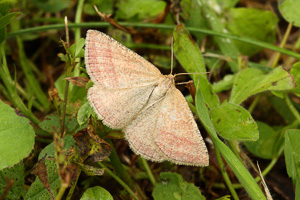
Light trapping overnight in improving conditions yielded more than 100 species. Of interest were: Goat, Etiella zinckenella, Udea fulvalis, Dorset Cream Wave, Jersey Emerald, Sub-angled Wave, Portland Ribbon Wave, Royal Mantle, Alchymist, Four-spotted, Lesser Belle, Pale Shoulder, Toadflax Brocade, Clancy's Rustic and Nine-spotted.




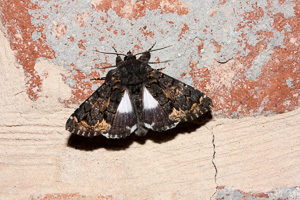
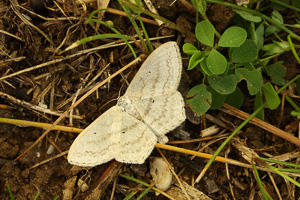
Site B - Casa Luisa, Sarnano
Site C - Monti Sibillini (roadside)
Site D - Monti Sibillini (alpine meadow)
Site E - Casa Luisa, Sarnano

The usual start to the day revealed a Great Banded Grayling (Hipparchia circe), along with the now-familiar residents, in the garden. But today was dedicated to visiting Gola del Infernaccio (Hell's Gorge) in the Monti Sibillini. Although the entrance to the gorge had some promising meadows, we decided to head into the gorge - knowing that the gorge eventually opened up into alpine meadows further up the mountain (2 hours up the mountain, as it happens!).
.jpg)
Our walk through the gorge was itself full of surprises. Our first surprise was finding a Clouded Apollo (Parnassius mnemosyne) sitting on a leaf and acting very docile.
.jpg)
Further along we found tracks through the mountainside that, apparently, had been formed by relatively-recent avalanches, but which had opened up the dense forest allowing sunlight, plants and butterflies to all flourish! These tracks proved to be havens for butterflies and we saw our first Pearl-bordered Fritillary (Boloria euphrosyne) in one of them. Another contained good numbers of Green-veined White (Pieris napi) and a single Wood White (Leptidea sinapis). We eventually reached the end of the gorge and the alpine meadows ahead, although the weather had beaten us there, with a strong breeze brewing. A surprise first encounter was a single Glanville Fritillary (Melitaea cinxia) on the grassy slopes. Several Green Hairstreak (Callophrys rubi) were also found flittering around the many hawthorn and blackthorn bushes in the area. A little further on, we found a relatively-scarce patch of nettles, with several Small Tortoiseshell (Aglais urticae) larvae munching away and a couple of Red Admiral (Vanessa atalanta) in their characteristic position in a folded leaf. The meadows were good too for burnets, and among the four species identified were Transparent and Slender Scotch.



The relic of a Black-veined White (Aporia crataegi) larval web was found on a blackthorn bush and a search of the surrounding area yielded 5 pupae on various plant stems.
.jpg)
With the weather deteriorating, we decided to head back down the gorge to the meadow we saw on our arrival.
.jpg)
By the time we arrived, there were few individuals on the wing due to the fading light. However, both Black-veined White (Aporia crataegi) and Mazarine Blue (Cyaniris semiargus) could be found roosting in good numbers. We also found two new species for the trip - Meadow Fritillary (Mellicta parthenoides) and Small Blue (Cupido minimus) - courtesy of an egg found by one of the party. A surprise find was a Narrow-bordered bee Hawk, freshly emerged among the grass of the meadow.
.jpg)
In rather cool, clear conditions light trapping produced nearly 70 species; nothing new apart from Bright Wave.
Site F - Casa Luisa, Sarnano
Site G - Gola del Infernaccio (Hell's Gorge), Monti Sibillini
Site H - Gola del Infernaccio (Hell's Gorge), meadow, Monti Sibillini

The day couldn't have been a greater contrast with the previous day - with an almost cloudless sky greeting us. The activity in the garden was much higher, with so many butterflies present that we spent a couple of hours just wandering around the garden and surrounding area. Highlights included a helice form of Clouded Yellow (Colias croceus), a couple of Ilex Hairstreak (Satyrium ilicis), a couple of High Brown Fritillary (Argynnis adippe), a Queen of Spain Fritillary (Issoria lathonia) that was to become a regular feature in the garden, and a single Southern White Admiral (Limenitis reducta).
.jpg)
.jpg)
.jpg)
After seeing the potential of the meadow at the entrance of "Hell's Gorge" (after yesterday's visit), we decided to pay a return visit. In total, the meadows probably took up the size of a football pitch, so there was plenty of ground to be covered. As soon as we got out of the van, a Large Tortoiseshell (Nymphalis polychloros) was seen sitting on a bush - a good start to the trip! Another nice surprise was finding a pair of Duke of Burgundy (Hamearis lucina) flitting about. Other new species for the trip were Tufted Marbled Skipper (Carcharodus flocciferus), Meleager's Blue (Meleageria daphnis), Dark Green Fritillary (Argynnis aglaja) and Speckled Wood (Pararge aegeria). The Speckled Wood exhibited the typical characteristic of individuals found in countries that are south of the UK, with the spots being a light brown, rather than white. Narrow-bordered bee Hawk was seen again, this time nectaring at the flowers of Verbena. An Actinotia radiosa moth, in the same genus as Purple Cloud, was found in the meadow too, as was the Handmaid.



This was also another location where finding pupae of Black-veined White (Aporia crataegi) was simply a matter of looking closely enough! We manage to locate 4 pupae in around 10 minutes of searching on the blackthorn bushes that surrounded the site.
.jpg)
.jpg)
.jpg)
Moth activity was evidently on the rise following the warmth of the day; additions to previous nights included: Festoon, Oncocera semirubella, Euchromius bella, Nomophila noctuella, Clay Fan-foot, The Argentine and Plum Lappet.
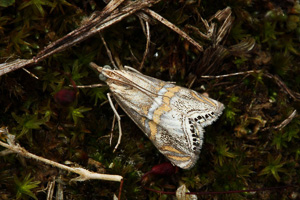

Site I - Casa Luisa, Sarnano
Site J - Gola del Infernaccio (Hell's Gorge), meadow, Monti Sibillini

After the usual foray in the garden, we set off for a day in Castelluccio. We stopped on the way at the edge of what can only be described as the "Castelluccio bowl" - a basin completely surrounded by hills and mountains - presumably the relic of a lake bottom.
.jpg)
At this stop we found a strong colony of Clouded Apollo (Parnassius mnemosyne) and, most unexpectedly, a colony of Glanville Fritillary (Melitaea cinxia). We also came across a mating pair of Mazarine Blue (Cyaniris semiargus). Lulworth Skipper (Thymelicus acteon), Orange-tip (Anthocharis cardamines) and Peacock (Inachis io) were also new for the trip.
.jpg)
.jpg)
We then moved down into the "basin" and found several Small Tortoiseshell (Aglais urticae) larval webs on the scarce beds of nettles. We also managed our first sightings of Eastern Large Heath (Coenonympha rhodopensis). Clearwing pheromone lures were deployed, and readily attracted Thrift Clearwing.
.jpg)
.jpg)
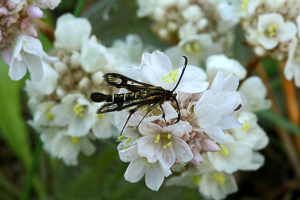

After a break in Castelluccio, we stopped off at another edge of the "basin". The flowers were incredible with poppies turning the hillside red in places.
.jpg)
Several species were found - including an ovipositing Mazarine Blue (Cyaniris semiargus).
.jpg)
.jpg)
We make a last stop at another site nearby but at a higher elevation, and that was quickly succumbing to cloud rising from the valley below.
.jpg)
At first glance, this site didn't seem to have much to offer. However, we quickly spotted distinctive geranium flowers being visited by Geranium Argus (Plebeius eumedon), which seemed to be all around us, making a very pleasant end to the day.
.jpg)
.jpg)
Ground Lackey, Vestal, Ruddy Carpet, Tawny Prominent were new additions to the light traps overnight.


Site K - Casa Luisa, Sarnano
Site L - Castelluccio

The day started with a couple of new species for the trip in the garden and surrounding area. A sighting of a Silver-washed Fritillary (Argynnis paphia) was followed by a Marbled Fritillary (Argynnis daphne).
.jpg)
We then decided to have a day of exploring - simply drive off in the van in whichever direction took our fancy! It didn't take us long to park up at the side of a road between Comunanza and Forze, next to a bridge that passed over a stream. This site proved to be very productive, giving us several new species for the trip, including a couple of "gems" - Large Blue (Maculinea arion), Large Chequered Skipper (Heteropterus morpheus), Mallow Skipper (Carcharodus alceae), Mediterranean Skipper (Gegenes nostrodamus), Olive Skipper (Pyrgus serratulae), Purple Emperor (Apatura iris) and Sloe Hairstreak (Satyrium acaciae). A Broad-bordered bee Hawk patrolled the boundary between the open area where all the butterflies were and the woodland bordering the stream.
.jpg)
.jpg)
.jpg)
.jpg)
Light traps produced in excess of one hundred species and dispersal was evident from the appearance of many of the following: Schoenobius gigantella, Willowherb Hawk, Spurge Hawk, Speckled Beauty, Three-humped Prominent, Passenger, Small Marbled and Porter's Rustic.




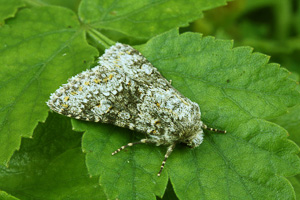
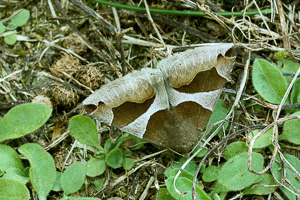
Site M - Casa Luisa, Sarnano
Site N - Road between Comunanza and Forze

We woke to glorious sunshine and decided that this would be our last chance to get to the top of the Monti Sibillini mountains in good weather! We parked as far up the mountain as we could before starting the long climb up, along typical winding paths.
.jpg)
We immediately noticed several Large Tortoiseshell (Nymphalis polychloros) flying around and could only assume that they were "hill topping" in search of a mate since they seemed to be all over the mountainside and one of the commonest butterflies we saw. There were also very good numbers of Small Tortoiseshell (Aglais urticae). The frequent Erebia encountered all turned out to be Piedmont Ringlet (Erebia meolans).
.jpg)
New species for the trip included Apollo (Parnassius apollo), Purple-edged Copper (Lycaena hippothoe) and Grison's Fritillary (Mellicta varia). The Purple-edged Copper was the high altitude form that lacks the purple flush and had clearly recently emerged since it was the only one seen and very fresh.
.jpg)
.jpg)
.jpg)
On our way down the mountain, we again stopped at the alpine meadow visited the previous Sunday. New moth species encountered included: Feathered Ear, Spotted Sulphur, the shark Shargacucullia caninae, Light Feathered Rustic, the arctiid Chelis maculosa and the immaculate red burnet, Mesembrynus rubicundus.
.jpg)
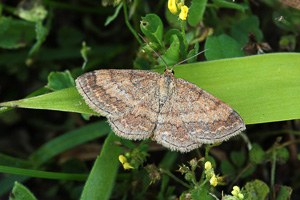



A Small Copper (Lycaena phlaeas) was found which was new for the trip. The meadow contained good numbers of Essex Skipper (Thymelicus lineola) although, with the light fading, there was not as much activity as earlier in the week.
.jpg)
A Spotted Fritillary (Melitaea didyma) pupa was also found by one of the group.
.jpg)
The final night's trapping produced the following additional noteworthy species: Melissoblaptes zelleri, Paratalanta hyalinalis, Antirrhinum Brocade, Bordered Straw, Scarce Bordered Straw, Lamprosticta culta and Lunar Yellow Underwing.

Site O - Case Luisa, Sarnano
Site P - Monti Sibillini
Site Q - Monti Sibillini (alpine meadow)

There was time for a quick look around the garden at Casa Luisa before we headed back to Ancona airport for the flight home.
.jpg)
All in all - an excellent week and a big thanks to Dave Green for leading the group.
Site R - Casa Luisa, Sarnano

